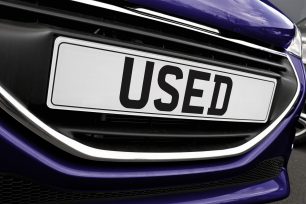A ball joint is a vital piece to your vehicle’s suspension. It provides the pivot point which allows your vehicle’s wheels and hubs to move independently of the body and frame. Without this very important piece we would be experiencing a much firmer ride in all of our vehicles. Even though you may often hear of ball joints “breaking,” in reality most of them simply fail. The ball-and-socket assembly becomes weak and loosens up, most likely creating a thumping noise when going over bumps or on hard turns, and sacrificing some control in the process. On a very rare occasion a ball joint can become so weak that it breaks away from the vehicle. This is not a good thing to have happen when driving because it means one of your tire-and-hub assemblies just went on vacation. That makes replacing a ball joint as soon as it shows signs of weakness extremely important.
How Do I Know When It’s Getting Weak?
Unless you hear a heavy clunking sound when going over bumps or making hard turns, it’s going to be hard to tell when a ball joint is becoming weak. The best thing you can do is have regular front end inspections performed. Most repair facilities will perform this service for free with a tire rotation. Catching a weak ball joint in time can save a ton of money in additional damage. Ball joints affect the alignment of your vehicle; if one fails it can wreak havoc on your tires and other suspension parts, causing only greater headaches when it comes time for the repair bill.
Knowing Your Vehicle
What type of vehicle you own will have the largest effect on the overall price of this particular repair. For example, if you own a four-wheel drive pickup, your ball joints are going to cost quite a bit more than a front-wheel-drive compact sedan; you’ll also have more of them. Several vehicles, including most trucks and SUVs, have both upper and lower ball joints on both sides of the suspension. Most front-wheel-drive vehicles have only lower ball joints in the front end. Whether you have two or four ball joints will dictate quite a bit a of difference in your repair bill, not simply because you’re going to be paying more for parts, but the job becomes more labor intensive on a 4WD vehicle.
How Much, Either Way?
If you’re a FWD sedan owner, you’re looking anywhere in the neighborhood of $250-$500 for both sides replaced. If you’re a 4WD owner, that could go as high as $1,100 for the replacement of all four ball joints. Not all 4WD vehicles will run into the $1,000 range; most will be in the area of $750-800, but it does vary by make, model, and year, so it’s not a bad idea to price your parts in advance. Keep in mind that your vehicle, depending on the make and model, is going to need an alignment performed after the replacement of the ball joints (you can check your owner’s manual, or with your technician, to see if your vehicle needs one; some don’t require it). The ball joints have a lot to do with the alignment of your vehicle. Skipping this step could destroy your tires and harm your suspension parts, including your new ball joints.
Can I Do it Myself?
While you’re certainly not banned from the job if you’ve got the tools and know-how, this is one that would be labeled Moderate to Difficult on the DIYer scale. Not to mention you’ll probably need to take it in to a shop afterwards to have the alignment performed anyhow. However, since this job is mostly labor in cost, you could save up to $800 if you have the ability to go the DIY route. The ball joints themselves usually run in the range of $40 to $200 from an auto parts store.
(Please remember that these repair prices can also fluctuate based on geographic location, as well as vehicle make and model; and that these numbers represent averages, not actual prices offered at any specific repair facilities.)


































































